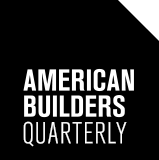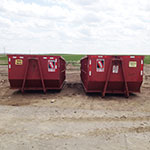200 square miles of water
Mark and Melissa Wahl founded Saginaw, Michigan-based Cobblestone Homes around the year 2000, after already remodeling a number of homes. Originally, the couple planned to rent the houses they constructed, but after speaking with some friends in the business, they realized they could serve a space in the market by selling. “We saw a need for homes that are energy-efficient and showcase top craftsmanship but also represent a tremendous value,” Melissa says. The business now serves Michigan’s Great Lakes Bay region, the state’s largest watershed. Comprising four counties, the region features nine different rivers that intertwine and drain into Saginaw Bay; because of these waterways, approximately 200 square miles of the region is H2O. The water and other natural resources are a major draw to the area.
90% custom-made
The first Cobblestone project was a spec home, and the Wahls thought they’d do more of those, but “we found our true passion in custom-home building,” Melissa says. She stopped work on a postgraduate degree in education to start her business, and in the 14 years since, she and Mark have developed a number of processes similar to those used by production homebuilders. “It’s strange to mesh custom homebuilding with the systems of a production builder, but it’s a model that works for us,” Melissa says. The company now builds 50–60 homes a year, 90 percent of which are custom, the rest are spec homes.

100% Energy Star-certified
Every year since 2005, Cobblestone has embraced at least one project that has challenged the firm in terms of building-science knowledge and business practices. “We say, ‘We’re going to use this as a growth project. What can we learn from it? What will we take away from it to use in our everyday work?’” Melissa says.
In 2005, for instance, the company committed to building 100 percent of its homes to reach Energy Star certification. In 2006, Cobblestone was the first company in the tri-city region to win Michigan’s Energy Star grant. And, in 2007, it built the area’s first Green Built Michigan home.
25,000 deaths per year
In 2008, Cobblestone partnered with the American Lung Association on the “Health Home” project, which taught the Wahls the importance of passively controlling radon, which is the second-leading cause of lung cancer in the United States. “At the time, 25,000 people died a year because of small increments of radon exposure over an extended period of time,” Melissa says. “I was appalled that smoke detectors are mandatory in every home when only 2,500 people die in house fires a year, but we weren’t doing anything about radon. Today, we put passive radon detectors in every home.”
1st LEED home in Great Lakes Bay
As it developed, Cobblestone Homes continued its efforts in sustainability, even constructing its region’s first LEED Gold home and—along with partners such as Dow Chemical Company—Michigan’s first net-zero energy
home. By 2011, however, the Wahls wanted a new challenge. Melissa says she asked herself, “What can take us to the next level?” She found her answer in the Department of Energy’s (DOE) Zero Energy Ready Home initiative.
“We initially found [HVAC-systems requirements] very challenging, and a lot of builders dropped out of the program because of it. Now we think it isn’t stringent enough.”
Melissa Wahl, Owner
1% of homes
The Zero Energy Ready Home project guidelines are so strict that only one percent of all homes currently meet them, and the energy standards, Melissa says, are particularly tough for many builders. Like Energy Star, the DOE requires an HVAC system that is sized properly and sealed tightly enough to pass the harshest testing, and this can be difficult to achieve in Michigan’s colder climate. “Two years ago, when we began [sizing and testing HVAC systems] for Energy Star, we initially found it very challenging, and a lot of builders dropped out of the program because of it,” Melissa says. “Now we think it isn’t stringent enough.”
2% of the world’s water supply
Today, Cobblestone is finishing its first two Zero Energy Ready Home projects: one has solar shingles, and one is ready for solar shingles if the homeowners want to install them. However, the locations’ energy efficiency was less challenging to the Wahls than their water-delivery systems.
Potable water makes up just two percent of the world’s water supply, so to conserve it, the Zero Energy Ready Home standards require builders to find ways to reduce the amount of water that goes down the drain when users are waiting for the delivery of hot water. “When you turn on a faucet, you can’t have more than 0.6 gallons flow before the water gets hot, which has to happen within a certain time limit,” Melissa says. The obvious solution was a continuous recirculation line in the hot-water tank that would constantly pump hot water through pipes, but the DOE objected on the grounds that it would consume energy.
“We really had to look at how we were plumbing homes,” Melissa says, explaining that ultimately she chose an owner-operated controlled-recirculation pump. “You get up in the morning and go into the bathroom, and instead of turning on the faucet, you push a button, get undressed, and 30 seconds later have hot water.”





